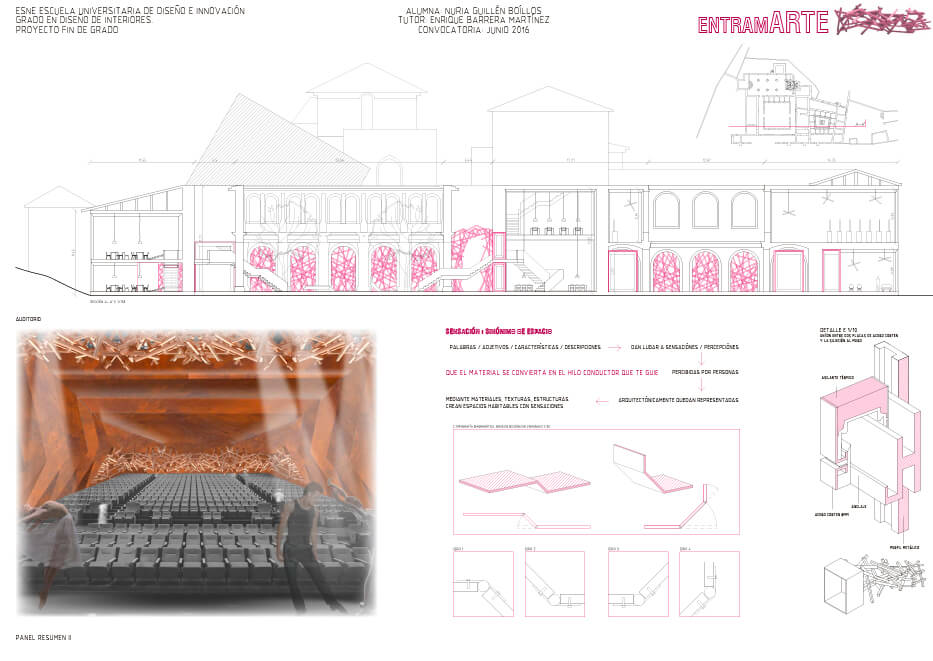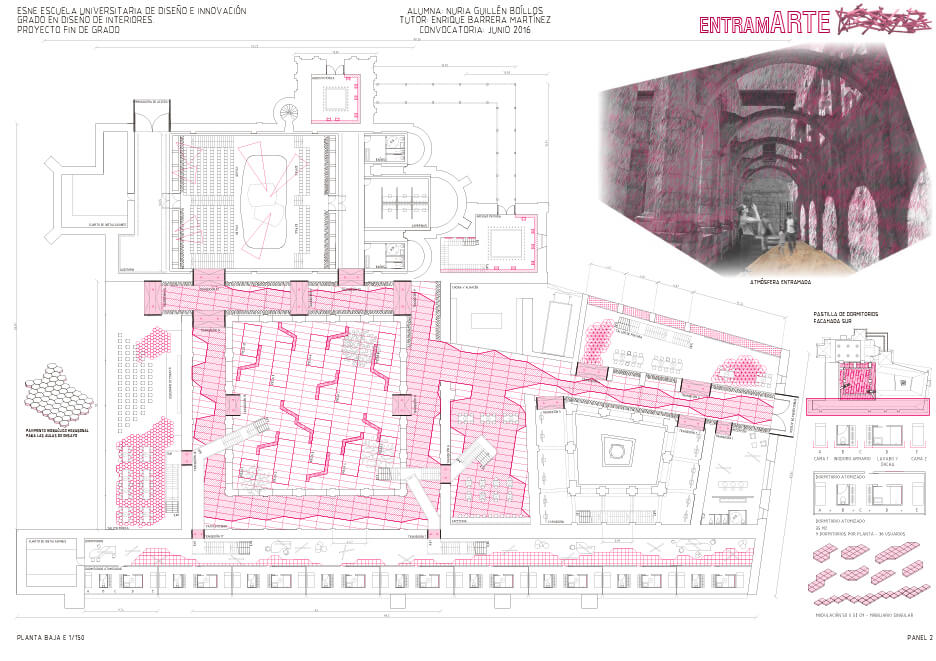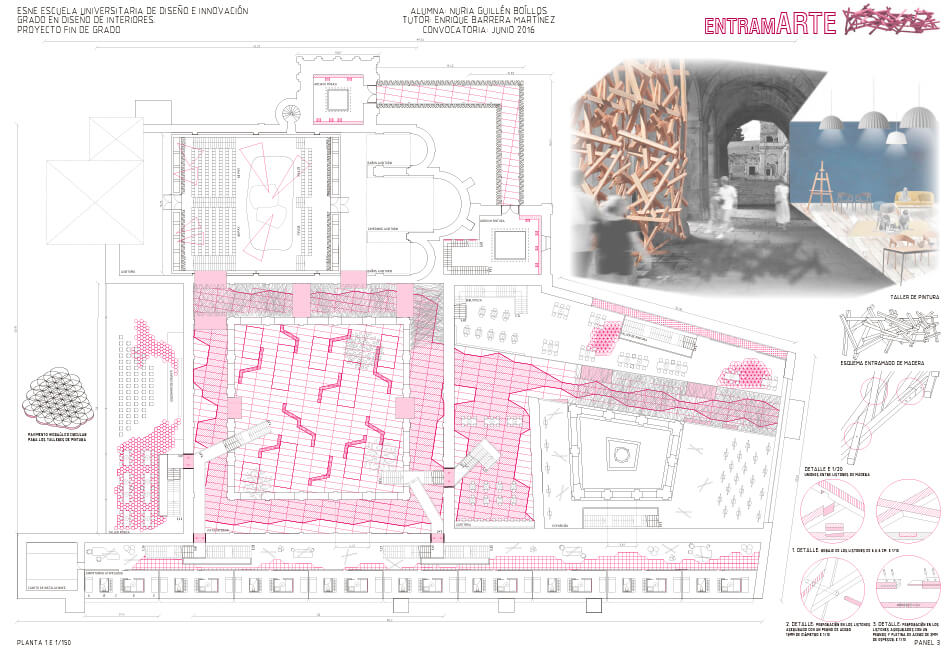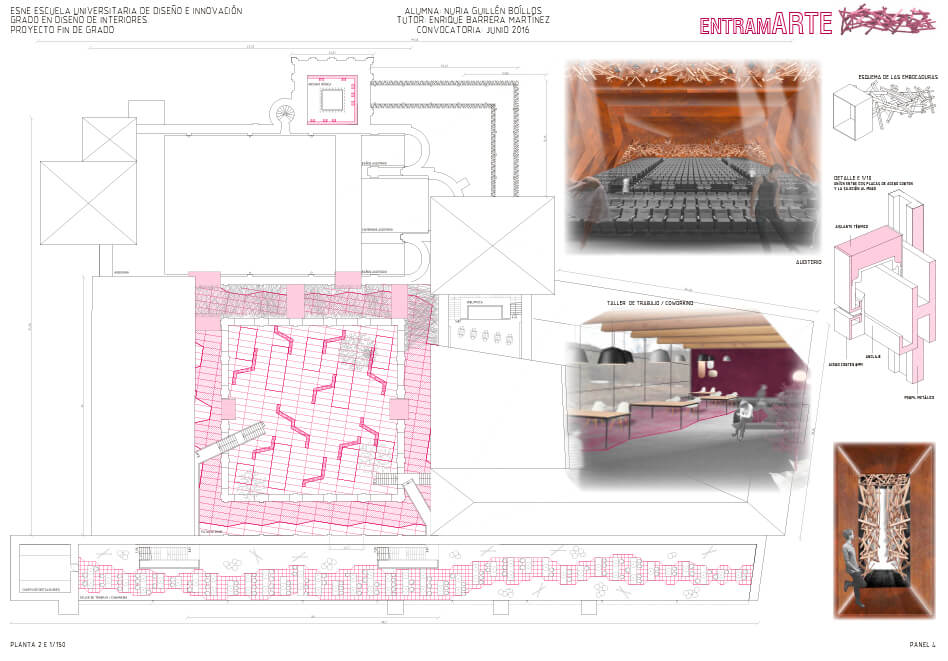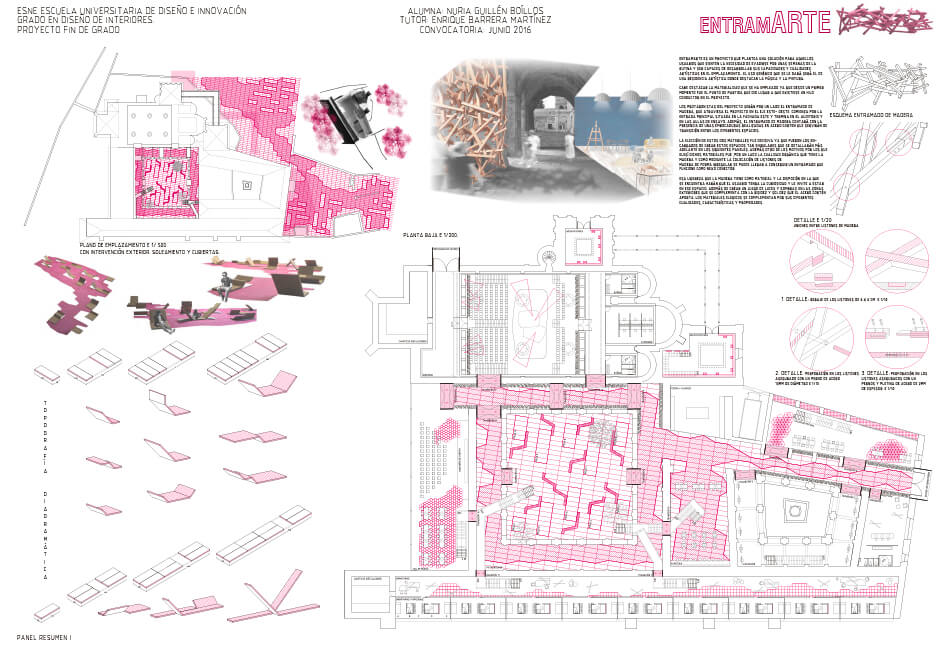Entramarte’ arose from the need to offer visitors the possibility of enjoying the environment and the programme developed in the project, which is an artistic residency. I chose this location because it was perfectly suited to the questions I had asked myself and which I wanted to resolve through the projection of ‘Entramarte’. I decided to extend literature, which was the theme imposed in the statement, towards the search for the union between all the arts. To achieve this, I introduced a library, painting workshops, rehearsal rooms, an auditorium and a document archive into the project.
The site is the Monastery of San Pedro de Arlanza, located in the municipality of Hortigüela in the province of Burgos. I chose this location mainly because of the landscape that surrounds it, with the Arlanza river that surrounds it, the colours full of nuances and different tones in the vegetation, which change depending on the time of year. Its silence, so striking but at the same time full of mystery, inspired me to design the rehabilitation of the existing ruins, trying to give them a different, innovative and avant-garde use.
The monastery was built in the 8th century to house Benedictine monks, but over time it fell into disuse until it was completely abandoned. The construction of the monastery began in 912, ordered by Count Fernán González. For a long period of time this place became one of the economic and cultural centres of the newborn Castile.
The starting point of my project is based on a criterion imposed in the brief, which was to take literature as a source of inspiration. From there I thought about the need for centres where people can learn, practice, experiment and develop all their artistic faculties. At this point I began to think that words, adjectives, descriptions, give rise to sensations and perceptions, which architecturally could be represented by materials, textures and structures that create habitable spaces.
One of the main issues I wanted to resolve was the circulation and how the different parts of the programme were to be integrated. I decided to establish a horizontal connection running through the whole monastery in such a way that this element gives it homogeneity as well as lightness and a perfect complementation with the existing. The connecting link has the characteristic of being constructed from wooden slats. I wanted the rigidity and solidity of the existing load-bearing walls to counterbalance their weight and presence through this framework.
In conclusion, I would like to stress that my project is based on the fact that the material becomes the guiding thread that guides you. The spaces must be understood as synonymous with sensation. The architectural structure is responsible for the unification of the different spaces that make up ‘Entramarte’.
